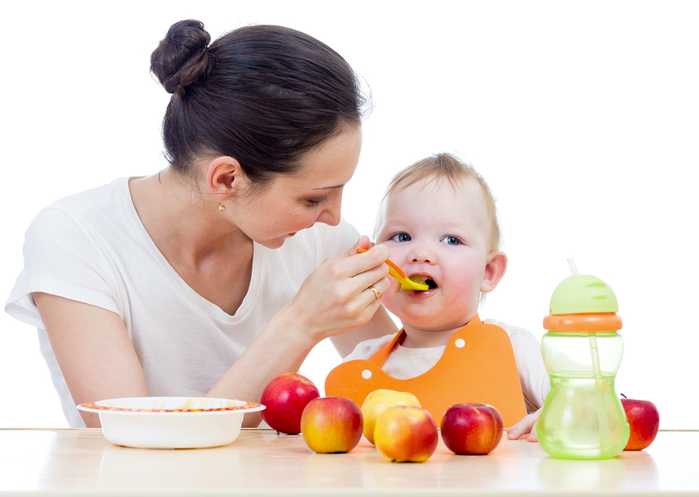Baby keeping food in mouth
Pocketing Food Strategies and Causes in Kids
Learn exactly what pocketing food is, strategies for how to move past it, and why kids, toddlers, and even babies will pocket their food!
She said, “My daughter does this really weird thing… she doesn’t swallow her food and holds it in her mouth, sometimes for hours.”
My first response was, as strange as it seems, it’s quite common for feeding therapists like myself to see. It’s called pocketing food. Pocketing food can play out in a few different ways, and there are several reasons why kids will stuff, or pocket, their food without any desire to swallow it.
Can it be infuriating for parents? Does it seem bizarre?
Yes.
But, there’s a way to help your child move past pocketing food. Before we get to that though, you have to fully understand what it is and why it happens.
What is Pocketing Food Exactly?
Pocketing food is when a child holds on to food in their mouth without swallowing it. Most kids will hold it in their cheeks or tucked behind or in front of their gums! Either way, it’s as if they’re sticking their food in a little pocket.
Why Do Children, Toddlers, and Even Babies Pocket Food?
Children tend to pocket food in their mouths for a few different reasons, and sometimes, there’s more than one! Let’s take a look at the most common causes for pocketing food in babies, toddlers, and children:
1. Sensory Processing – Children will sometimes get a food in their mouth, realize they don’t like the texture of it, and instead of spitting it out, they just hold on to it.
In other instances, some children can’t feel where the food is very well. It’s something we take for granted as adults, but if a child’s oral sensory sensations aren’t sending the right signals to the brain, it can be as if they can’t find the food. They may not even realize it’s there! At the same time, because they can’t feel the food well in their mouth, they may put way too much in because that increases the sensations, but then the food is too much to handle.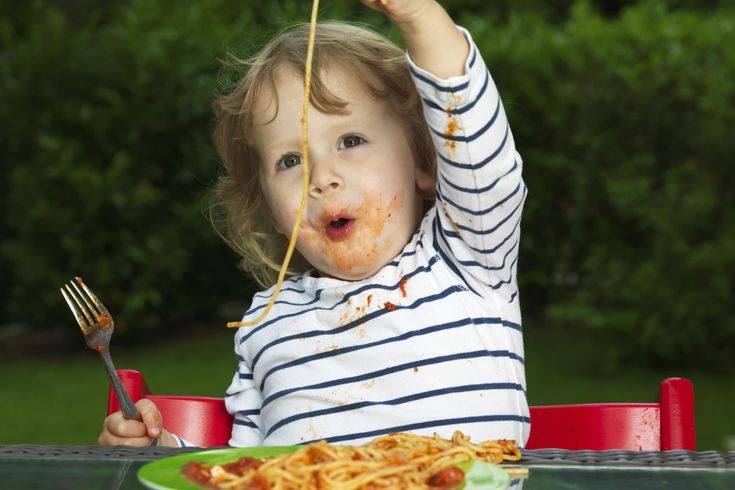
Although any child can face this challenge, mouth stuffing is fairly common in Autism and Sensory Processing Disorder.
Still, some kids pocket food because they like the way it feels. While this may sound stranger yet, it also has to do with what signals the brain is getting. That pocket of food is putting pressure on their tongue, cheek, or gums and it may be soothing. Much the way some people like the way a hat feels on their head or compression gear.
To learn more about the huge impact sensory has on eating and how to help kids overcome it, check out Sensory Issues with Food!
2. Oral Motor Skills – In contrast to sensory issues, oral motor skills have everything to do with the strength and coordination of the muscles inside our mouth. That means, how our tongues move to help with swallowing and chewing, as well as keeping our lips closed to be able to chew without food falling out!
But, that’s just the tip of the iceberg. Head over to Oral Motor Skills to learn more.
Point being, if a child has some weakness with their oral motor skills, the food may get stuck in their mouth and they can’t get the food that’s caught in a pocket of their mouth.
3. Painful or Uncomfortable Swallowing – As a coping mechanism, some kids will hold onto food because it hurts to swallow. This could begin because of a common sore throat, chronic reflux, or swollen tonsils/adenoids, to name just a few reasons.
In some situations, the fear of swallowing becomes a habit, or a learned behavior, and kids need help moving past that mental block.
When kids or toddlers are food pocketing, it’s common to see that they are also extreme picky eaters or having a feeding disorder like PFD. The reasons above cause so much pain or difficulty that it has impacted their ability to eat a variety of foods across the board.
At the same time, if your child only pockets their food occasionally at meal times, it could be because of the food texture. Soft food is easier to lose track of and accidentally stays in their cheek or under their tongue. Some kids may pocket only with new foods because the texture is overwhelming.
Soft food is easier to lose track of and accidentally stays in their cheek or under their tongue. Some kids may pocket only with new foods because the texture is overwhelming.
No matter what the case, if your child or toddler is holding food in their mouth with any regularity, it’s important to address it. Let’s talk about how…
Affiliate links used below. See our full disclosure.
How You Can Help Your Child Stop Pocketing Food!
As a parent, there are some simple strategies you can use to help your child swallow the food they’re keeping in their mouth for a long time:
Pocketing Food Strategy #1: Give Small BitesIf you’re feeding a baby or young toddler, only give them a few pieces of food at a time so that it’s easy to manage. For older kids, also try to keep the serving size smaller, and either cut food into smaller pieces or help them to do so. The less food they have to chew and swallow will decrease the chance that it gets pocketed.
A powerful strategy is to teach your child to take a sip of water as soon as they seem to be done chewing or after a few seconds. Depending on their age, you can tell them that taking a drink helps get the food down to their belly. Demonstrate for them, if they don’t understand or follow your directions.
Pocketing Food Strategy #3: Use an Open Cup for DrinksUsing an open cup, if they’re able, helps to flood the mouth with liquid and pull the pocked food down the throat better than a straw or sippy cup. Some kids are able to easily take drinks and maintain their pocketed food, in which case, you’ll need the next tip.
Pocketing Food Strategy #4: Talk Them Through the Steps for SwallowingBefore your child takes a drink, pocket some food in your mouth, in a similar spot to where they’re holding the food. Step by step, tell them how you’re getting the food out of your mouth.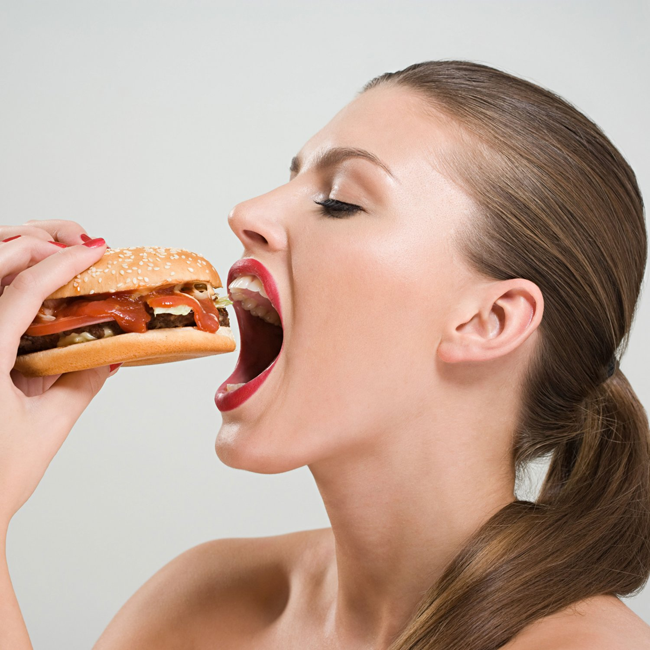 That might look a little something like this, tell your child, “Move your tongue over to the food and scoop it out like a shovel. Now, put it on top of your tongue. Take a drink and swallow the food down with your water.”
That might look a little something like this, tell your child, “Move your tongue over to the food and scoop it out like a shovel. Now, put it on top of your tongue. Take a drink and swallow the food down with your water.”
You may have to demonstrate a few times. It may also be helpful to do this in front of a mirror or bring a hand held one to the table, especially when they can’t feel the food or are working on their oral motor skills.
Pocketing Food Strategy #5: Use a ToothbrushYou can use a toothbrush two different ways to help improve pocketing food. First, is in the moment. If your child or toddler is trying to get the pocketed food out, and can’t, you could use the toothbrush to sweep it out to the front of their mouth where they’ll have more control. From there, your child may be able to swallow or you can couple this with the take a drink trick.
But, a toothbrush, or even better, a vibrating toothbrush like this one, can help a child’s sensory processing and oral motor skills when it’s used 2-3 times a day. Except don’t just brush their teeth, you’ll also want to brush along their gums, tongue, and inside of their cheeks.
Except don’t just brush their teeth, you’ll also want to brush along their gums, tongue, and inside of their cheeks.
However, using a toothbrush for these purposes shouldn’t be forced. If you’re child is sensitive to it, then you’ll want to take it slow and allow them to gradually become more comfortable.
Pocketing Food Strategy #6: Alternate Bites With Something CrunchyThis can be especially helpful for babies and toddlers that are frequently pocketing food, but older kids can be taught to do this if it’s helpful. When sensory is the reason for pocketing food, having very crunchy food consistently gives strong input to the sensory system which can help decrease pocketing.
For example, you may serve your child chicken (a food they tend to pocket) with crunchy apple cubes. After they have a bite of chicken, then their next bite is apples.
Pocketing Food Strategy #7: Don’t Let it Turn into a BattlePocketing food can turn into a power that kids will wield when they know it makes their parent go crazy.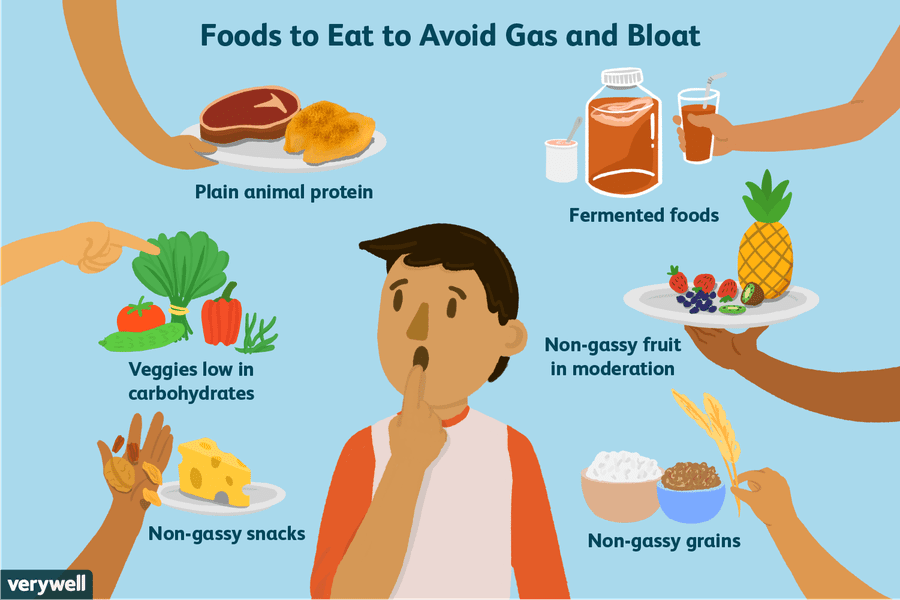 To avoid that, try to keep your frustrations, although understandable, to yourself. Try to get them involved in overcoming pocketing food and approach it as a team. To learn more about keeping mealtime positive, head to my best picky eating tip.
To avoid that, try to keep your frustrations, although understandable, to yourself. Try to get them involved in overcoming pocketing food and approach it as a team. To learn more about keeping mealtime positive, head to my best picky eating tip.
When You Should Get Help for Pocketing Food
Pocketing food can be a sign that more complex feeding challenges are in play, and feeding therapy may be beneficial for your child. I’d highly recommend keeping your child’s doctor in the loop, and seeking out more help if pocketing food is impacting their ability to eat enough. Feeding therapy is usually done by an occupational therapist, like myself, or a speech therapist.
You can find out how to schedule an appointment for your child in this guide to feeding therapy.
Pocketing food can be overwhelming. If you have a tip that has helped your child, share it below in the comments so that we can include even more strategies!
And, if you’d like some more support and next steps for a plan you can start using at home to help your picky eater, grab a free seat in my free 2 Keys to Turn Around Picky Eating Workshop!
More Help for Feeding Issues in Kids
How to Squash Picky Eating Without Any Nagging
Feeding Red Flags for Babies and Toddlers
A Hidden Cause of Picky Eating: Acid Reflux
Are Food Jags Affecting Your Picky Eater? What you need to know
Alisha Grogan is a licensed occupational therapist and founder of Your Kid’s Table. She has over 18 years experience with expertise in sensory processing and feeding development in babies, toddlers, and children. Alisha also has 3 boys of her own at home. Learn more about her here.
She has over 18 years experience with expertise in sensory processing and feeding development in babies, toddlers, and children. Alisha also has 3 boys of her own at home. Learn more about her here.
Guide to Food Pocketing in Babies (6+ months)
Home » Healthy Kids » Guide to Food Pocketing in Babies – What is it and 10 Strategies to Help
Food pocketing sounds like something a cute little squirrel should be doing to build up their acorn stash for the winter, not your 9-month-old, right? We’ll explain what food pocketing is, why it can happen, and offer 10 practical strategies to help if your child pockets food. For ages 6 + months.
Medically reviewed and co-written by Lauren Braaten, Pediatric Occupational Therapist (OT).
What is Food Pocketing
Food pocketing happens when your baby chews and holds food in their mouth for an expanded period of time but does not swallow the food. Common places to pocket or “hide” food are inside the cheeks, the front of the mouth, or on the roof of the mouth.
As a parent, imagine your surprise if you went to brush your baby’s teeth at night and found a chunk of food from dinner over an hour ago! However, keep in mind that not all babies and toddlers will pocket food. For some babies, this is just a phase that usually occurs around 6-12 months of age. This is right in the midst of when your baby is learning to mash and chew foods.
Typically, food pocketing will happen less and less as your little one gets more experience with foods. Baby will start to develop a better sense of boundaries in their mouth. Oral motor skills, like jaw strength and tongue movements, will improve to help move food where it needs to go. But what things contribute to food pocketing? And how can you help your baby or toddler move past it?
Frequently Asked Questions
What age can kids pocket food? Is it just a phase?
Kids can pocket food at any age, but it typically occurs more often in babies and toddlers who are just learning to chew. While pocketing food can be a phase, it may last longer for some babies and toddlers compared to others. Some toddlers may pocket food beyond 12 months, especially with harder to chew textures, such as meats.
While pocketing food can be a phase, it may last longer for some babies and toddlers compared to others. Some toddlers may pocket food beyond 12 months, especially with harder to chew textures, such as meats.
Is food pocketing dangerous?
Although pocketing food is not dangerous in the moment when baby is sitting in their high chair, the risk of choking may come into play after the meal, when baby is crawling or moving around and forgets that the food is still in their mouth. In addition, the longer food sits on baby or toddler’s teeth or gums, the risk for tooth decay and dental carries increases.
Can food pocketing be a sign of autism?
While children with autism may have atypical eating behaviors, like hypersensitivity to food textures or food pocketing, these behaviors can also happen in plenty of kids who do not have autism. Food pocketing by itself cannot determine whether or not a child has autism.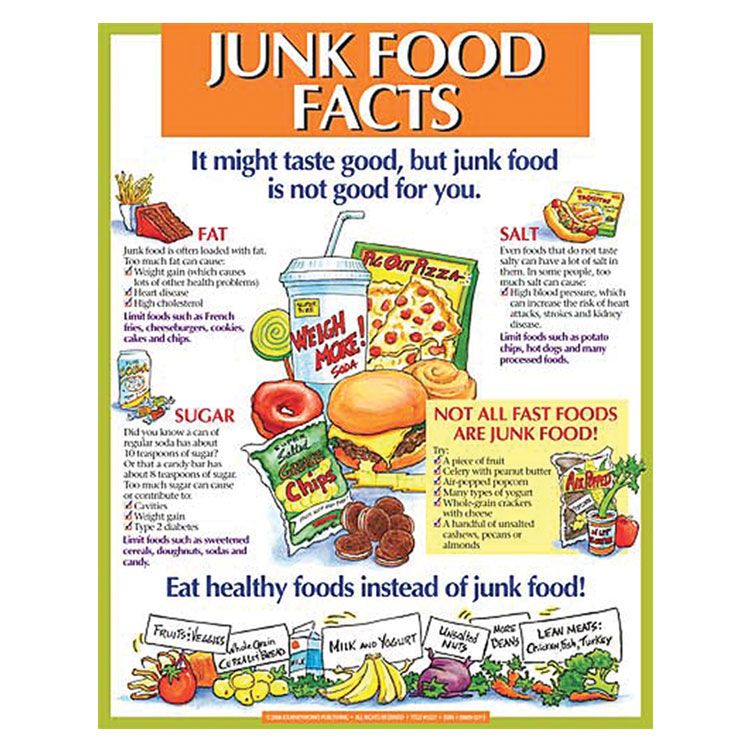
Why do Babies, Toddlers and Children Pocket Food
There can be many different reasons why food pocketing happens. We’ll discuss a few of the most common ones below.
First, it might be related to sensory processing. Sensory processing involves how our brains receive input through the senses (hearing, taste, touch, smell, sight, balance, body awareness, and internal sensations) from our nervous system. Without efficient sensory processing, baby doesn’t have the awareness to feel where the food is in their mouth. They might “lose” the food inside their mouths instead of swallowing it.
On the flip side of sensory processing, some babies may pocket food because they like the sensation it provides. Storing or pushing a piece of food into the side of the mouth can activate a “stretch” sensation in the sensory receptors, which some babies like.
Another reason for food pocketing can be related to weak oral motor skills. If your baby doesn’t yet have the strength and coordination to completely chew and swallow foods, it might get “stuck” in a pocket of the mouth. This is why it’s important to provide foods that are appropriate for your child’s skill level and age.
This is why it’s important to provide foods that are appropriate for your child’s skill level and age.
A third reason might be that baby has learned that swallowing is uncomfortable or painful. They might be pocketing food in order to avoid swallowing. This could be due to something as simple and temporary as a sore throat, or it could be related to swollen tonsils, adenoids, or a history of reflux.
10 Strategies to Help if Your Child Pockets Food
- Cue baby on what to do. It can be as simple as saying “Uh-oh, it looks like you forgot a piece of food in your mouth. You can chew and swallow, so it goes down to your tummy.”
- Show and tell. Place a small piece of food in your mouth. With a little bit of exaggerated movements, demonstrate and explain how to use your tongue to remove the food. You could do this in front of a mirror or bring a small mirror to the table, especially for older toddlers or kids with decreased sensory awareness.

- Encourage a sip. Using a drink of water or milk can help clear food from the mouth and wash it down. An open cup works better for this than a straw or sippy cup, since it lets liquid spread around the mouth and cover more area.
- Remind them it’s okay to spit out food. Some toddlers are already pros at this, so use with discretion. Other toddlers might have been taught (by well-meaning daycare teachers or grandparents) that it’s not polite to spit out food. But if the food is a new or harder-to-chew texture, they might be pocketing to avoid swallowing it. Remind them that they can spit it out and show them with a piece of your food. Give this option minimal attention and keep your expressions neutral in order to avoid making a game of it.
- Maintain a tooth-brushing routine. Brushing the gums, teeth, and tongue twice a day is good for oral hygiene, as well as increasing sensory awareness. Using an electric toothbrush will give added sensory input through vibration.

- Alternate textures of foods. If your baby tends to pocket meats or soft veggies, serve a crunchy food, such as apple sticks or veggie straws at the same meal. Encourage alternating bites from soft to crunchy to increase sensory awareness in the mouth.
- Add a sauce or dip. Foods with slightly drier textures, such as chicken, pork or bread, may be challenging for some kids to chew and swallow, unless they have some added moisture. Consider marinating meats or serving with dips to soften these foods a bit.
- Increase sensory input. Slightly spicy, tart, or sour foods can “wake up” the mouth and even increase saliva flow, which may help with swallowing instead of pocketing. Examples include tart or sour fruits, such as lemons, limes, oranges, or raspberries. You can also try pickles, kimchi, sauerkraut or kefir. Or adjust the temperature of foods and drinks, such as ice-cold water, frozen yogurt or fruit that’s been popped in the freezer for a few minutes.

- Play games. Make silly faces in the mirror with your baby or toddler by sticking out your tongue, puffing your cheeks, or making a kissy face. Or put a dab of applesauce, yogurt or pudding on the corners of the mouth or on the lips and encourage your child to lick it off. Older toddlers and kids can blow bubbles, whistles, or play with a harmonica. These games can strengthen mouth muscles and improve coordination.
- Be patient. Intervene only if necessary. Ideally, using some of the above strategies would have worked to get food out of the mouth. Sometimes a little extra patience is necessary. However, we advise being very cautious any time you intervene by putting your fingers in your baby’s mouth. This can increase the risk of choking by possibly pushing the food farther back into the mouth. It’s also not a pleasant experience to have someone sticking their fingers in your mouth. At this point, we’d advise picking up your baby, bringing them to the bathroom mirror, and asking them to open their mouth.
 From here, you can try to “brush” or sweep out the food with a toothbrush, something that baby is used to having in their mouth. Gently slide the toothbrush in along the inner cheek and try to slide the food out.
From here, you can try to “brush” or sweep out the food with a toothbrush, something that baby is used to having in their mouth. Gently slide the toothbrush in along the inner cheek and try to slide the food out.
When to get Professional Help
While food pocketing is usually just a phase, you may find yourself wondering if additional support is needed. It may be time to discuss concerns with your pediatrician if you regularly find food in your baby or toddler’s mouth after one or more meals a day, for more than a couple of months. Try to keep note of what type and texture of foods seem to get pocketed in your baby’s mouth.
Your pediatrician can refer you to a provider with knowledge of pediatric feeding and swallowing, such as an occupational therapist or a speech-language pathologist.
The child holds food and does not swallow: malyshi — LiveJournal
?-
Tsarevna-LEB (Vrubel) ( Princess_LEBED ) Wrote in Malyshi ,
9000
- Food
- Children
- Cancel
1) Problem: daughter 2.2, 20 teeth, always had a poor appetite, eats a very limited set of products, and for the last month she has generally started to keep food in her mouth and not swallow :(( Just recently I fed her soup, everything is small cut it, the soup is delicious, but no, she ate a few spoons, and then keeps it in her mouth. I, as a person who is unrestrained in life, start to get nervous, scold her, she may start to roar, but she does not swallow. after soup begged for Barney's bear and swallowed it perfectly.0011 What could be the problem? I don’t like food, in general, a little baby, as soon as it starts to hold in its mouth, stop feeding, it doesn’t matter that before that I ate just a couple of spoons?
2) We also have a problem, we taught our child to eat half cartoons, now we are trying to get away from this. But then the op begins. What to do? Endure, do not turn on cartoons, let him roar and not eat?
But then the op begins. What to do? Endure, do not turn on cartoons, let him roar and not eat?
3) We still cannot come to the format "the child eats the same as the parents." Anyway, I cook for her separately for dinner. Get away from it? They tried, for example, gave pilaf, vegetable stew, do not eat. What to do? If you don’t want ours, don’t eat, but I won’t cook separately either, let’s go to bed. So?
my daughter goes to the GKP, where she eats breakfast (porridge, she eats it herself) and lunch (soup, sometimes half a cutlet + mashed potatoes, the teachers feed her with this). Naturally, all without cartoons. It doesn’t seem to keep food in the garden, but according to the teacher, I didn’t see it myself. We feed her at home, she doesn’t eat herself, at most she can eat cottage cheese and drink kefir.
Tags: 2-3 years old, food (adult)
Subscribe
-
Kazan with children
Hello! I would like to go to Kazan this summer (mid-July) for 4-5 days.
 We are going with this line-up: we (husband and wife), 2 daughters (10 and 5 years old) and ...
We are going with this line-up: we (husband and wife), 2 daughters (10 and 5 years old) and ... -
Who gives directions to mantu?
Sorry, quick stupid question. Were on Thursday at the pediatrician, she said on Monday to make a mantoux, to sign up "to any doctor." I'm so...
-
Massage for a 2 year old
Please advise a massage therapist for a 2 year old. There is ZRR and periodic walking on toes. No other diagnoses. Geo: Moscow, ZAO, m youth
Photo
Hint http://pics.livejournal.com/igrick/pic/000r1edq
Previous
← Ctrl ← Alt
- 1
- 2
Next
Ctrl → Alt →
-
Kazan with children
Hello! I would like to go to Kazan this summer (mid-July) for 4-5 days.
 We are going with this line-up: we (husband and wife), 2 daughters (10 and 5 years old) and ...
We are going with this line-up: we (husband and wife), 2 daughters (10 and 5 years old) and ... -
Who gives directions to mantu?
Sorry, quick stupid question. Were on Thursday at the pediatrician, she said on Monday to make a mantoux, to sign up "to any doctor." I'm so...
-
Massage for a 2 year old
Please advise a massage therapist for a 2 year old. There is ZRR and periodic walking on toes. No other diagnoses. Geo: Moscow, CJSC, m youth
How to teach a child to chew - tips from Heinz Baby
At 6-7 months old, babies begin to make their first distinct chewing movements with their gums. The baby will learn to fully chew closer to 2 years, and fully coordinate the processes of biting, chewing and swallowing - only by 4 years. And the development of the dental system, the development of speech skills, the ability to eat foods and dishes from the common table depend on how successfully the child goes through this period.
When should a child be taught to chew?
In order not to face a situation in the future when the child will soon go to kindergarten, and he still agrees to eat only pureed food, carefully observe him and stimulate chewing processes.
As soon as the baby begins to put toys in her mouth and actively bite them (usually around 6 months of age), offer her an instant biscuit or fruit pieces in a nibbler, as well as soft fruit pieces such as a banana, plum or peach without the skin. Please note that it is recommended to give grapes only after 9 months, cutting the grapes into halves and removing the seeds!
After 8-9 months, periodically replace meat purees with homemade steam cutlets or meatballs. Children can also be offered vegetable soups with small pieces of boiled vegetables.
After 8 months, offer your baby pieces of cheese, bread, baby vermicelli, soft foods that still need to be chewed.
Do not be afraid if you find a small unchewed and undigested piece in the child's stool. The kid is just learning to eat on his own, such “finds” can normally be detected up to 3-4 years. Be patient and everything will work out!
The kid is just learning to eat on his own, such “finds” can normally be detected up to 3-4 years. Be patient and everything will work out!
What are the difficulties in chewing?
Chewing is a complex skill, the formation of which requires the readiness of the muscles, the maturity of the nervous system and the interest of the baby himself. Sometimes this skill is formed longer than usual. Normally, a child chews well after a year, but some children may have problems chewing solid food until 2-3 years of age. This can happen for several reasons:
- The timing of the introduction of complementary foods has been shifted: the child began to get acquainted with "adult" products too late.
- Food has been pureed or too finely ground for too long (many mothers cook pureed food for too long, fearing that the baby might choke).
- Late learning to use a spoon. If a child ate from a bottle for a long time, and got acquainted with a spoon after 6-7 months, then he will probably learn to chew later.

- The child is very active, it is difficult for him to stay in one place for a long time and concentrate on chewing food.
- Incorrect feeding. If the baby is forced to eat when he has already eaten, or he simply does not like food, he will refuse not only solid, but generally any food.
- Features of health. Perhaps the child refuses solid foods due to diseases of the digestive system, problems in oral-motor development, swallowing disorders. If there are other symptoms, you should consult your pediatrician.
There are several signs of improper chewing of food:
- the baby tries to swallow without chewing (in pieces), which causes vomiting, coughing, asthma attacks during feeding;
- the child tries to suck food or holds it in the mouth behind the cheeks for a long time, but does not try to chew it with the gums or teeth;
- baby simply refuses hard pieces, spits them out;
- He doesn't try to bite or chew on hard foods like baby biscuits.

It is important to understand why there are problems with proper chewing and eliminate them - they are dangerous. Most of all, this affects the functioning of the digestive system. Without characteristic movements of the jaws during chewing, disturbances occur in the production of gastric juice and enzymes necessary for the digestion of coarser food. Disturbances in the development of the dentoalveolar system can affect the bite. If the child does not chew, the muscles involved in articulation do not develop. This can cause problems with speech development, pronunciation of certain sounds.
When will the baby be ready for solid foods?
Willingness to bite, chew, gnaw on solid foods is formed gradually - already at those moments when the baby, due to teething, begins to pull teethers or other toys into his mouth. By the time when it is possible to start introducing solid foods, the child's behavior changes:
- he confidently removes food from the spoon with his lips, knows how to pull them out, stretch them to the spoon, smack his lips - the facial muscles gradually become stronger;
- even if there are no teeth yet or very few, the baby tries to “chew” his gums, move them;
- he is interested in "adult" food, reaching for it;
- opens its mouth wide when feeding.

These signs usually appear at 6-8 months of age. They mean that the baby's diet can be changed. This must be done gradually.
| Age | Consistency | Features |
| 6-8 months | Particles up to 0.3 mm | Well-mashed vegetables can sometimes be added to ready-made tender puree to make the consistency more dense, to prepare the body and especially the stomach for a change in diet. |
| 8-9 months | Particles up to 1.5 mm | Cereals and purees may contain soft particles of cereals, fruits, vegetables, which are easily chewed even by the gums. |
| 9-12 months | Pieces up to 3 mm | Larger, firmer pieces that can be chewed are added. |
| From 1 year | Solid food | Food may contain small pieces of soft meat or fish, firm vegetables. You can try to bite off pieces from a soft pear, apple. |
Ways to teach a child to chew
Normally, the baby learns to chew on his own, and parents should only help him a little:
- eat together, take your time so that the baby can see how you chew your food;
- increase the density of foods and the size of the pieces gradually;
- offer foods that can be bitten or chewed: instant cookies, apples, pears;
- In the first months you can do tongue massage to stimulate muscle development;
- praise the child when he tries to chew food;
- stimulate the formation of chewing skills: do not take away the teether, give crackers or cookies that can be chewed with gums for a long time, use nibblers.
Common mistakes
Sometimes it is difficult for a baby to learn to chew because of feeding mistakes:
- parents are afraid that the child will choke and show him their fear;
- new products are used to introduce solid food.
 It is better to give the baby a well-known zucchini or banana;
It is better to give the baby a well-known zucchini or banana; - parents rush the baby, if he rolls food in his mouth for a long time, does not swallow it - he needs time to learn a new skill;
- The solids in the food are too large. Because of this, a gag reflex can be triggered;
- a child is offered solid food, the taste of which he does not like;
- the baby is forced to eat when he does not want and refuses to eat.
The baby starts eating more dense, solid foods around 8 months of age, when many new foods are added to the diet. At the same time, the rules for introducing new complementary foods do not change: only one new product can be added at a time, offering a small amount, evaluating the reaction to it. If too many new foods or dishes appear on the menu, the baby may not like it, and he will refuse any food - not just solid. It will be better if he calmly gets acquainted with the new food. There is no need to rush him, even if he wants to keep it in his mouth for a long time, examine it, knead it with his hands or smear it on a plate or table.